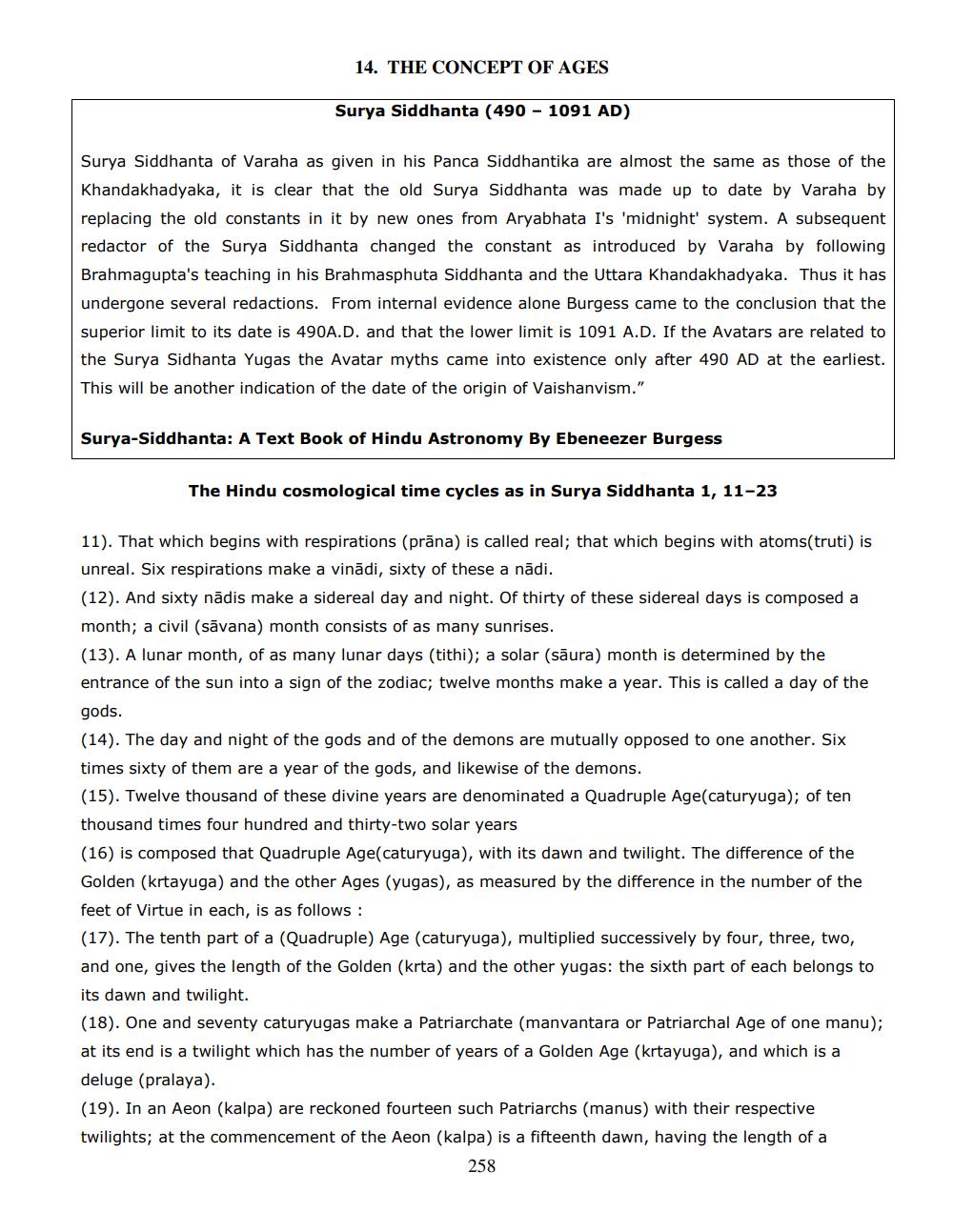________________
14. THE CONCEPT OF AGES
Surya Siddhanta (490 - 1091 AD)
Surya Siddhanta of Varaha as given in his Panca Siddhantika are almost the same as those of the Khandakhadyaka, it is clear that the old Surya Siddhanta was made up to date by Varaha by replacing the old constants in it by new ones from Aryabhata I's 'midnight' system. A subsequent redactor of the Surya Siddhanta changed the constant as introduced by Varaha by following Brahmagupta's teaching in his Brahmasphuta Siddhanta and the Uttara Khandakhadyaka. Thus it has undergone several redactions. From internal evidence alone Burgess came to the conclusion that the superior limit to its date is 490A.D. and that the lower limit is 1091 A.D. If the Avatars are related to the Surya Sidhanta Yugas the Avatar myths came into existence only after 490 AD at the earliest. This will be another indication of the date of the origin of Vaishanvism."
Surya-Siddhanta: A Text Book of Hindu Astronomy By Ebeneezer Burgess
The Hindu cosmological time cycles as in Surya Siddhanta 1, 11-23
11). That which begins with respirations (prāna) is called real; that which begins with atoms(truti) is unreal. Six respirations make a vinādi, sixty of these a nādi. (12). And sixty nādis make a sidereal day and night. Of thirty of these sidereal days is composed a month; a civil (sāvana) month consists of as many sunrises. (13). A lunar month, of as many lunar days (tithi); a solar (sāura) month is determined by the entrance of the sun into a sign of the zodiac; twelve months make a year. This is called a day of the gods. (14). The day and night of the gods and of the demons are mutually opposed to one another. Six times sixty of them are a year of the gods, and likewise of the demons. (15). Twelve thousand of these divine years are denominated a Quadruple Age(caturyuga); of ten thousand times four hundred and thirty-two solar years (16) is composed that Quadruple Age(caturyuga), with its dawn and twilight. The difference of the Golden (krtayuga) and the other Ages (yugas), as measured by the difference in the number of the feet of Virtue in each, is as follows: (17). The tenth part of a (Quadruple) Age (caturyuga), multiplied successively by four, three, two, and one, gives the length of the Golden (krta) and the other yugas: the sixth part of each belongs to its dawn and twilight. (18). One and seventy caturyugas make a Patriarchate (manvantara or Patriarchal Age of one manu); at its end is a twilight which has the number of years of a Golden Age (krtayuga), and which is a deluge (pralaya). (19). In an Aeon (kalpa) are reckoned fourteen such Patriarchs (manus) with their respective twilights; at the commencement of the Aeon (kalpa) is a fifteenth dawn, having the length of a
258




